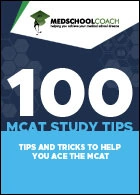
Table of Contents
On average, a four-year medical school education costs $286,454. Whether you attend a private or public institution and are considered an in-state or out-of-state applicant will greatly affect these costs.
The total number of students applying to medical school has begun to decrease from the record highs seen during the recent pandemic. However, the costs of attending a medical institution are unlikely to go down anytime soon.
Fortunately, many funding opportunities are available to help you reach your goal of a successful medical career. Scholarships, loans, grants, and tuition-free schools are all possibilities.
Our Physician Advisors can walk you through the medical school admissions and application process for your best shot at getting into the school of your choice.
Tuition-Free Schools
There are a small number of free-tuition medical schools and several work-study programs that cover the total cost of medical education:
- Albert Einstein College of Medicine: Einstein began offering tuition-free education in February 2024 after a generous $1B donation. The college aims to reach students who align with their mission rather than only those “who can afford it.”
- New York University Grossman School of Medicine: NYU’s two tuition-free medical schools offer a unique 3-year MD program for medical students specializing in primary care. The only condition is that students maintain satisfactory academics. The school also offers need-based scholarships to help cover any additional expenses.
- Cleveland Clinic Lerner College of Medicine of Case Western Reserve University: CCLCM covers the full tuition of its 5-year MD program, which includes an additional research thesis year. Students then graduate with a special qualification in biomedical research.
- Abigail Geisinger Scholars Program: The Geisinger Commonwealth School of Medicine covers the cost of tuition and living expenses, plus a stipend, for select med students specializing in family medicine, internal medicine, pediatrics, or psychiatry. For every one year of tuition covered, medical students must work for one year as a Geisinger physician for a minimum of 2 years and a maximum of 4 years.
- Uniformed Services University of Health Sciences (USU): This Department of Defense Institution, known as “America’s Medical School,” considers its students “active duty” and provides full tuition, salary, housing allowance, and benefits. Admission to the school requires students to commit to a minimum of 7 years of military service. (Read our complete guide to military medicine paths.)
- Twenty-First Century Scholars Program: UPenn’s Perelman School of Medicine provides approximately 35 full-ride scholarships based on merit. Though not tuition-free for 100% of students, almost 20% of matriculants go through this program without ever paying for tuition.
Watch this Webinar: 10 Ways You Could Save $10,000: Crash-Course in Paying for Med School
Less Expensive Med Schools
If you want to pay off med school debt faster or rely less on scholarships, in-state public medical schools are generally a less expensive option.
Public schools’ in-state tuition is around 25%-50% less expensive than private schools (or out-of-state tuition for public schools). Without interest, going to a public med school in-state could save you $80,000-$150,000.
Note: The following states have no med schools: Alaska, Delaware, Montana, and Wyoming. Idaho and Maine only have DO-granting programs, no MD-granting ones.
Related: Top Easiest Med Schools to Get Into
Scholarships and Grants
You do not have to pay back scholarships or grants, unlike loans. Scholarships are typically merit-based (given for achievement), while grants are usually need-based (given due to financial limitations).
There are countless scholarships and grants offered at individual institutions and local organizations, so check with your undergrad’s career center, your academic advisor, or the medical school of your dreams for more info about institutional or regional scholarships.
However, there are nationwide scholarships and grants for medical school, which we discuss below.
Full Tuition Scholarships
- NHSC Scholarship Program: The National Health Service Corps (NHSC) covers full tuition, living expenses, and a stipend for medical students specializing in primary care. For every one year of tuition covered, you must serve one year in a designated Health Professional Shortage Area for a minimum of two years and a maximum of four years.
- Health Professions Scholarship Program: The NHSC also covers full tuition and living expenses, plus a stipend, for medical students intending to serve in the U.S. Armed Forces under the Army, Air Force, or Navy. Medical students must fulfill a 3-year commitment as an active duty officer or 1 year of service for each year of tuition covered.
- Rauch Family Leadership Scholarship: Every applicant at Duke University School of Medicine can be considered for this merit-based scholarship, which covers full tuition, fees, transportation, living allowances, and other expenses.
- Robert W. Woodruff Fellowships: Emory University School of Medicine provides 4 first-year medical students a full-ride merit-based scholarship and stipend for a maximum of 4 years of medical education
- Leaders of Tomorrow Scholars Program: Every applicant at David Geffen School of Medicine is considered for a full-ride scholarship based on merit.
Use MedSchoolExplorer, our FREE database of all US medical programs, to build your list of where to apply.
Scholarships for Underrepresented Individuals
- National Medical Fellowships Need-Based Scholarship Program: This scholarship is for, but not limited to, African-American/Black, Hispanic/Latino, American Indian, or Alaska Native applicants.
- Native Hawaiian Health Scholarship Program: The Health Resources and Service Administration (HRSA) covers full tuition, living expenses, and a stipend for medical students with Hawaiian ancestry. You must commit to serving 2-4 years in an underserved area of the state of Hawaii.
- Indian Health Service Scholarship: This scholarship for documented American Indian or Alaska Native applicants pursuing certain degrees should fully cover tuition and required fees and provide a monthly stipend. There’s a service commitment.
- Soros Fellowships for New Americans: This is a United States postgraduate fellowship for immigrants and children of immigrants.
Scholarships for Medical Students
- American Medical Association Scholarships
- AAMC Herbert W. Nickens Medical Student Scholarships
- Board Vitals Medical School Scholarship
- Tylenol Future Care Scholarship
Search Ed.gov for an extensive list of scholarships and grants. Plus, read more about whether you can negotiate student loans.
Loans
You have to pay back loans, unlike scholarships or grants. There are two main types of medical student loans: federal and private.
Federal Loans
Federal loans are offered by the federal government based on need. There are numerous benefits, including income-driven forgiveness and repayment plans for public servants. Unlike private loans, you don’t need a credit check or cosigner.
However, if you don’t stick to your payment plan, the federal government may garnish your wages, your tax refund, or up to 15% of your Social Security.
Federal loans require applicants to:
- Be U.S. citizens or noncitizens with a valid Social Security number
- Be enrolled in a medical degree program at least half-time
- Keep satisfactory academics to maintain eligibility
Fill out the FAFSA (Free Application for Federal Student Aid) to see what federal medical school loans you’re eligible for. (Schools also use FAFSA to determine eligibility for school-specific scholarships.) Get as much federal aid as you can before you take out any private loans.
Although recent administrations have expanded and contracted the federal loans on offer from the Department of Education, here are the currently available federal student loans:
- Direct Subsidized Loans: Direct Subsidized loans are calculated based on the applicant’s financial need and the school’s cost of attendance (COA). Direct Subsidized Loans do not charge interest while the student is enrolled half-time.
- Direct Unsubsidized Loans: Direct Unsubsidized loans are calculated by the school’s cost of attendance minus other financial aid received. Interest is charged at all periods, and unpaid interest may be added to the loan’s principal amount.
- Direct PLUS Loans (Unsubsidized): A credit check is required, but the Direct PLUS loans are calculated by the school’s cost of attendance minus other financial aid received. Direct PLUS includes two types of loans:
- Grad PLUS Loans: Loans issued to graduate and professional students.
- Parent PLUS Loans: Loans issued to the parents of the student.
What if I can’t pay back my student loans? If you’re struggling to repay your federal loans, apply to enter forbearance (better short-term), temporarily suspending or reducing your payments, or apply for deferment (better long-term), postponing your payments for a certain period of time. The DoE also offers some repayment options for income-driven repayment, although these plans fluctuate depending on the current administration.
Private Loans
Private education loans are offered by private lenders that set their own terms and conditions. There are as many types of private student loans as there are banks.
Private student loans have some benefits over federal loans:
- You do not need to fill out a FAFSA for private loans.
- Private lenders cannot garnish wages, tax refunds, or Social Security.
- Private student loans are essentially limitless.
- There are countless financial institutions with different interest rates and repayment options to choose from.
However, private loans tend to have more downsides than federal loans:
- Private loans generally have higher interest rates than federal loans. Don’t be tricked by variable-rate loans; they don’t usually benefit the borrower (you).
- Most private loans accrue interest while you’re enrolled in medical school, unlike federal direct subsidized loans.
- You will need to pass a credit check or get a cosigner who will pass a credit check.
- Although some offer repayment benefits to attract more borrowers, private student loan lenders are not required to offer any federal-style repayment benefits.
- If you don’t repay, they may sell your private student loan debt to an annoying collections agency and tank your credit score.
If you’re struggling to pay private loans, speak to your financial institution about repayment options. These are generally less flexible options than those offered for federal student loans.
Ask For This Financial Aid Info
As you consider specific medical schools, talk to those schools’ financial aid officers or read the school’s financial aid web pages for the following information:
- The school’s average 4-year cost, including tuition, fees, and room/board
- The average debt load for the most recent graduating class
- How to apply for financial aid, how much parental information is needed
- Your eligibility for institutional scholarships and grants
Repaying Medical School Debt
About 3 in 4 medical students graduate with medical debt, averaging over $200,000, so you’re not alone. There are several ways to pay off that debt, as well as a few ways to seek loan forgiveness.
The AAMC maintains a list of many scholarship, loan repayment, and loan forgiveness programs available to medical students. AAMC’s searchable database is not exhaustive but can help you find options that fit your location and specific needs.
Here are the most common student loan repayment programs:
- Income-Driven Repayment: Federal loan borrowers can apply for repayment plans based on their income. If you make under 225% of the Federal Poverty Line (about $35,000 for an individual), you may be eligible for $0/month payments.
- Public Service Loan Forgiveness (PSLF): Students who borrow Direct Loans (subsidized or unsubsidized) may have their student loan balance forgiven after making 120 consecutive monthly loan payments while serving a qualifying nonprofit organization. This is an excellent option for medical students interested in working in a nonprofit setting.
- NHSC Students 2 Service Loan Repayment Program: NHSC (National Health Service Corps) entitles students to earn up to $120,000 towards their monthly payments, plus a monthly stipend for expenses during medical school. This loan repayment is in exchange for 3 years full-time, or 6 years of half-time, commitment to work in an HSPA (health professional shortage area) after completing residency.
- The Indian Health Service (IHS) Repayment Program: IHS entitles students to earn up to $25,000 per year towards their student loans in exchange for full-time clinical service at an Indian health facility with staffing needs.
- State-Funded Repayment Plans: Some states offer their own loan repayment terms in exchange for service in high-need areas.
- Employer Repayment Plans: Some private employers offer their own loan repayment terms in addition to relocation packages in exchange for employment.
- Bankruptcy: In a severe, last-resort scenario, you may be able to get rid of all or a big chunk of private student loan debt by specifically filing for Chapter 7 or Chapter 13 bankruptcy.
Our tips? Aggressive repayment reduces your time under the burden of debt. Also, start paying off debt as soon as post-grad or residency. Trust us, you’d rather be low on fun money now rather than later.
FAQs
Including all medical school application fees, exams, and more, it can cost $5,000 to apply to med school. Even more, if you don’t make it in your first application cycle.
Some financial aid is available during this process. The AAMC and the AACOM both offer fee waiver programs for students with financial need:
- The Association of American Medical Colleges (AAMC) Program: Approved applicants will receive aid for application fees, along with a reduction in the MCAT registration fee, and a subscription to the Medical School Admission Requirements (MSAR) online database.
- The AACOMAS Fee Waiver Program: Approved applicants will be provided funds to cover the primary application fee and access to AACOM’s Big Interview Platform, which assists with interview prep.
There are three primary ways to serve in the military and go to medical school:
- Health Professions Scholarship Program: The NHSC covers full tuition and expenses, plus a stipend, for medical students intending to serve in the U.S. Armed Forces under the Army, Air Force, or Navy. Medical students must fulfill a 3-year commitment as an active duty officer or 1 year of service for each year of tuition covered.
- Uniformed Services University of Health Sciences (USU): This Department of Defense Institution, known as “America’s Medical School,” considers its students “active duty” and provides full tuition, salary, housing allowance, and benefits. Admission to the school requires students to commit to a minimum of 7 years of military service.
- Part-time Reserve or Guard: If you don’t want to serve full-time in the military, consider the Army Reserve or National Guard. Both of these options are compatible with a medical school course load, and they each offer partial tuition assistance.
After medical school, residents do receive a salary. That said, medical students don’t automatically receive a stipend in med school without a scholarship to provide it. Certain MD programs or scholarship programs do offer a monthly stipend while you’re in school, but this is rare.
Learn More: Get Financial Aid for Advising, Tutoring, and Clinical Travel
Ready to Start Your Medical School Journey?
Applying for medical school can seem overwhelming, but there are a lot of resources available to help you turn your dream of working in healthcare into a fulfilling and lucrative reality.
Medical school is a significant financial investment, but it pays off over time when you put in the work. This guide should help you understand your options for paying off medical school either ahead of time with scholarships and grants or after you graduate with loan repayment plans.v
Schedule a free 15-minute consultation with MedSchoolCoach to learn how we can help boost your chances of success getting into medical school.

Sahil Mehta MD
Dr. Mehta is the founder of MedSchoolCoach and has guided thousands of successful medical school applicants. He is also a practicing physician in Boston where he specializes in vascular and interventional radiology.





